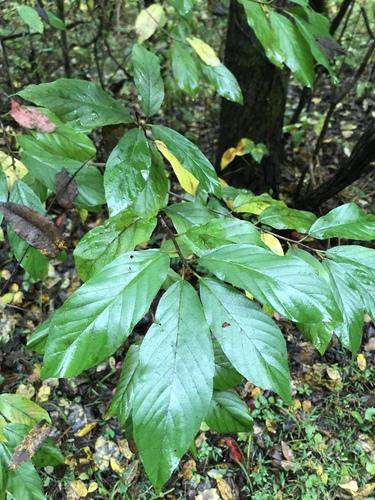
Carolina buckthorn (Frangula caroliniana)
Carolina buckthorn, also known as American buckthorn, Yellowwood
The Carolina buckthorn, known scientifically as *Frangula caroliniana*, derives its common name from its prevalence in the Carolinas, particularly South Carolina where it was first identified. The Latin name also reflects this regional association. Despite its name, the tree lacks thorns entirely.
Key characteristics include:
1. **Size and Form**: It is a small deciduous tree or large shrub, typically reaching 12-15 feet in height.
2. **Leaves**: The leaves are glossy, dark green, and oval-shaped, with smooth margins, turning yellow in autumn.
3. **Flowers and Fruits**: It produces small, greenish-yellow flowers in late spring to early summer, followed by red berries that darken to black as they ripen.
4. **Wildlife Interaction**: The berries, while potentially toxic to humans if ingested, are a food source for songbirds. Additionally, deer often browse on its bark.
The Carolina buckthorn thrives in well-drained soils and is commonly found in woodlands, forest edges, and near streams, making it a valuable ornamental and ecological species.